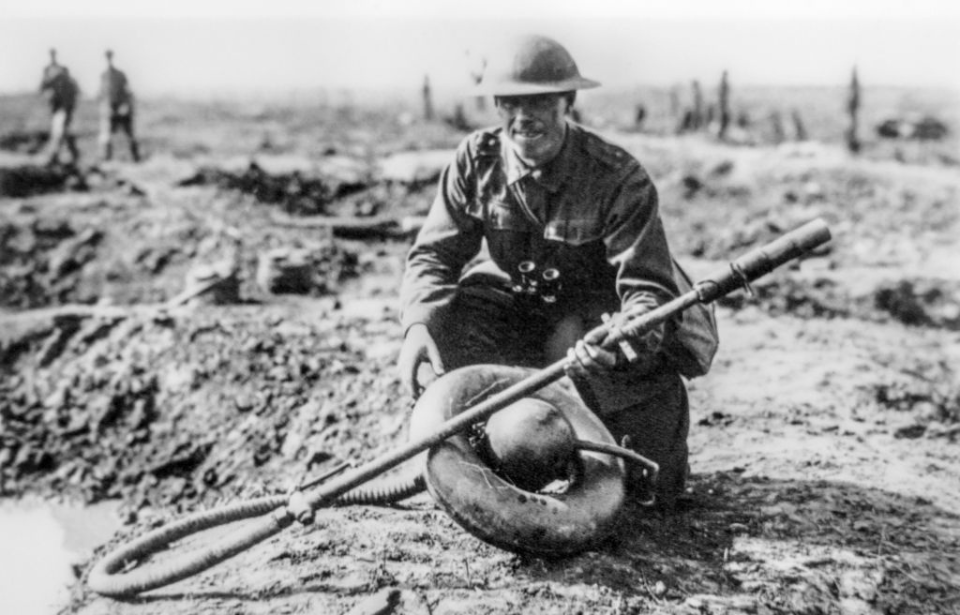For centuries, militaries tried to harness the ability to command fire. There were various methods used, but the flammenwerfer models developed by the German Army prior to World War I were the beginning of modern flamethrowers as we know them today. Their use in the conflict struck fear into the Allied forces, who were showered in flames while in their trenches, and the weapon’s power was fully recognized as a result.
Richard Fiedler’s patent
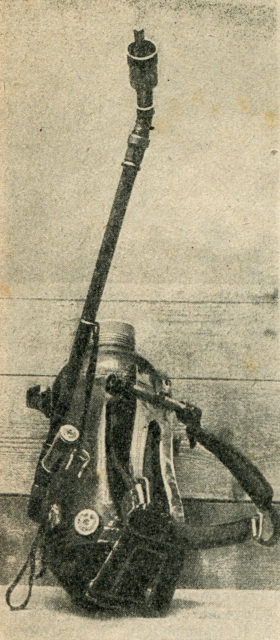
In 1901, Richard Fiedler patented the design for a machine that could weaponize fire. It’s from this that modern flamethrowers are attributed. Fielder’s design was so intriguing that it caught the attention of the German Army that same year. Officials began funding the project, hoping to adopt whatever means he came up with.
Fiedler was tasked with coming up with various models of flammenwerfers and presented a working prototype in 1905. After testing and trials, two designs were delivered and accepted into service: the grossflammenwerfer and the kleinflammenwerfer.
Grossflammenwerfer
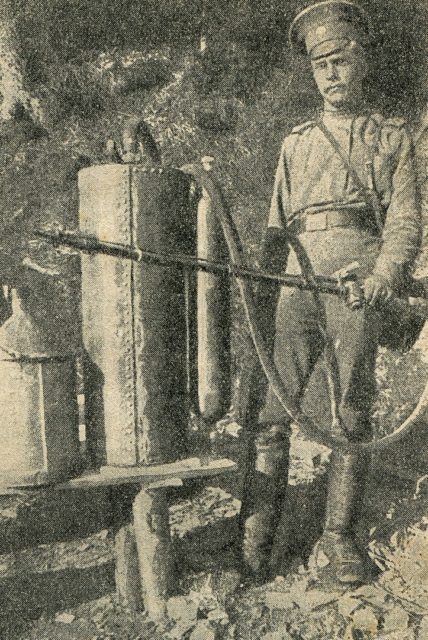
Also known as the Grof, the Grossflammenwerfer was the largest and heaviest of the German flamethrowers, and not intended to be carried by troops. Comprised of a stationary fuel and propellant tank with a loose hose, it would be placed in one position, as it wasn’t easily moved. Once set up, soldiers would use the hose to attack enemy trenches.
Early versions of the Grof could spray flames up to 40 yards for 40-50 seconds, while later models allowed for multiple hoses and tanks to be used. This early flammenwerfer had to be operated by a team of five men. Operators would aim the fire upward, to cause the flames to “rain” down on enemy trenches, instead of spraying across the top.
A disadvantage of the Grof was the risk of the tank exploding, due to enemy fire, and that the sheer amount of flammable liquid held within would cause a much larger – and possibly lethal – explosion.
Kleinflammenwerfer
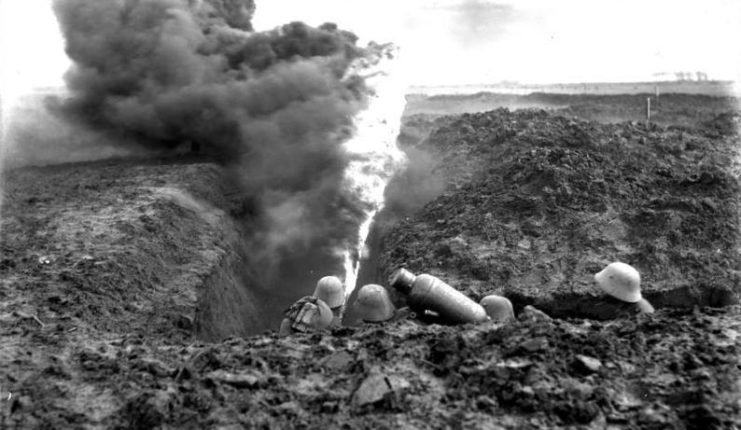
Also known as the Kleif, the kleinflammenwerfer was a more portable flamethrower operated by a four-man crew. Still not operable by a single person, it had two functioning parts: the fuel and propellant tank that was worn as a backpack and the hose that connected to it.
The first soldier was in charge of carrying the tank, accompanied by a second for assistance. The third was in charge of operating the hose and and directing the spray, while the fourth crewman was trained to assault enemy positions. The intention was to force them out, thus exposing the troops to the destruction and pain of the Kleif. There were multiple variations developed that saw the necessary crew dwindle to two, but it could never quite be reduced to a single soldier.
As it was smaller that the Grof, the Kleif was unable to achieve the same reach. The spray was limited to 20-30 yards, with a continuous spray of just 20-40 seconds. Regardless, the Kleif proved effective when it was first unleashed by the Germans at Verdun on February 26, 1915.
Wechselapparat
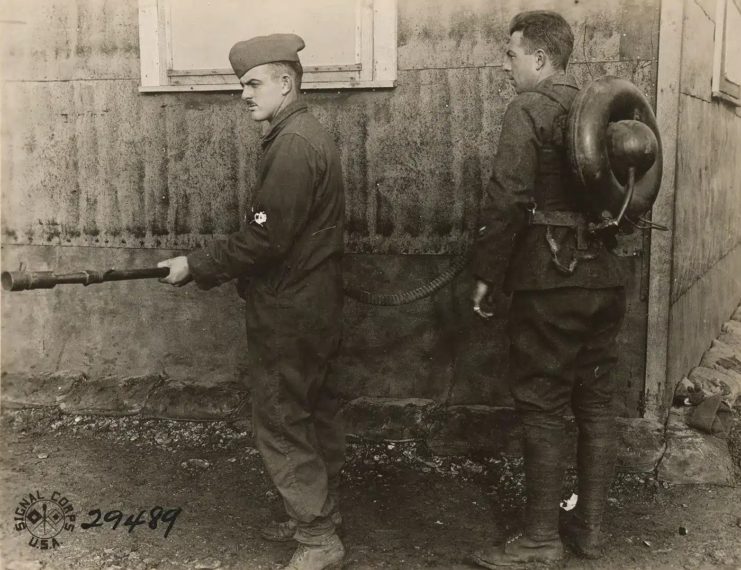
A third flammenwerfer was developed well into the First World War: the Wechselapparat, also known as the Wex. It was introduced into service in 1917 and had a unique distinction over the Kleif, as its backpack-style tank was donut-shaped.
Like the Kleif, the Wex was operated by a four-man crew, although it seems probable that it could have technically been manned by a single person. As this was a possibility, it’s likely soldiers were trained on how to operate it individually, but, due to the ease of the team approach, this was almost never employed.
Bernhard Reddemann made flammenwerfers useable on the battlefield
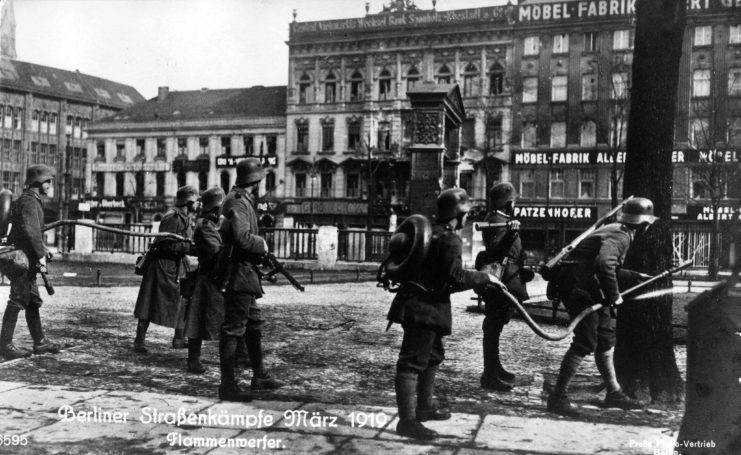
Independent of Fiedler, Bernhard Reddemann developed his own flamethrower. He was inspired by the use of kerosene by the Japanese in the Russo-Japanese War, and used his knowledge as a chief firefighter using pumping equipment to extinguish fires.
When the First World War broke out, Reddemann served as part of a Pioniere unit made up of specialized troops. By the second year of the conflict, he was the head of a flammenwerfer battalion, and Fiedler’s designs were made viable in war thanks to him.
The flammenwerfer units employed both the Grof and Kleif to initiate combined attacks, which were some of the most successful uses of the weapons during the conflict. Reddemann kept records of his men, recording only 890 deaths of the thousands who served. He also noted that they were successful in more than 80 percent of attacks.
More from us: The Allies Crafted the Largest Non-Nuclear Explosion to Win the Battle of Messines
The flammenwerfers of WWI continued to be improved upon, and a single-soldier version was ready to be equipped by the time the German Army became embroiled in the Second World War.
